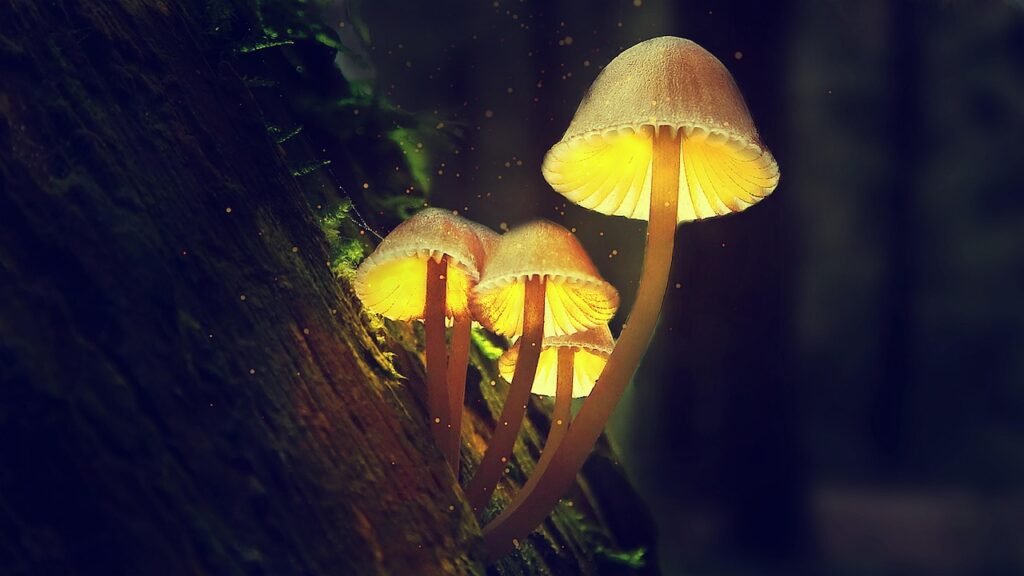Picture yourself wandering through a dense forest on a moonless night. The darkness surrounds you like a thick blanket, yet suddenly your eyes catch glimpses of an ethereal greenish glow emanating from fallen logs and tree trunks. You might think you’re witnessing something supernatural, but you’ve actually stumbled upon one of nature’s most mysterious phenomena.
Bioluminescent fungi, also known as glowing fungi, can be spotted in nature by emitting a green light (delayed fluorescence), generally growing on the base of dead bamboo, tree trunks, roots, decaying wood, and fallen leaves. Visible at nightfall, bioluminescence can be observed in living cultures and fruiting bodies for at least days or even a week. These remarkable organisms have puzzled scientists for centuries, yet their secrets are finally beginning to unfold. Let’s dive into the fascinating world where science meets magic in the darkest corners of our forests.
The Ancient Mystery of Foxfire
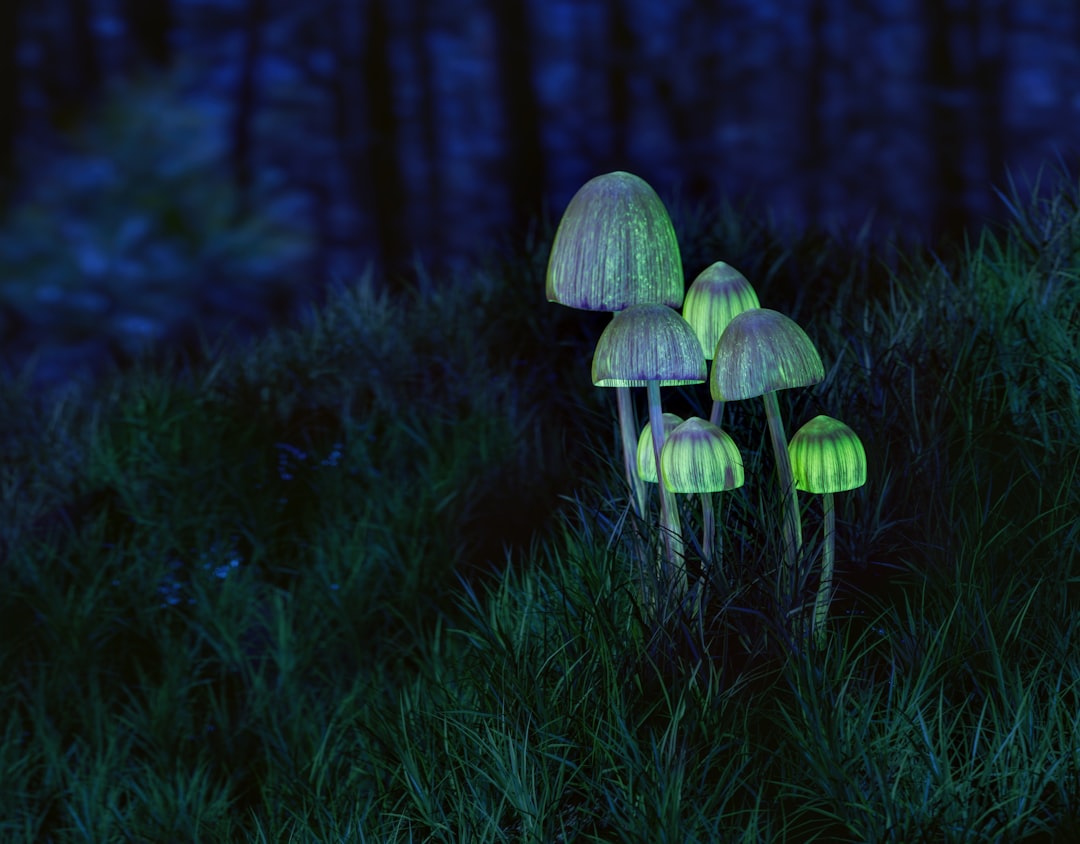
The mysterious forest glow, sometimes referred to as “fairy fire,” was first observed thousands of years ago, when Aristotle described a “cold fire” light emanating from the woods. Later, in the first century, Roman thinker Pliny the Elder, described luminescent mushrooms on white wood in olive groves. This phenomenon has captivated human imagination throughout history. Foxfire, also called fairy fire and chimpanzee fire, is the bioluminescence created by some species of fungi present in decaying wood. The bluish-green glow is attributed to a luciferase, an oxidative enzyme, which emits light as it reacts with a luciferin.
In the following centuries, scholars remarked upon the luminescent properties of mushrooms and the cultural uses of these fungi – in the 1500’s, a Swedish scholar noted that Scandinavians used luminescent fungi for light during dark, winter nights, and in the 1600’s, a Dutch physician noted that Indonesian cultures used them as improvised torches. The practical applications weren’t just historical curiosities. The Swedish historian Olaus Magnus wrote in 1652 that people in the far north of Scandinavia would place pieces of rotten oak bark at intervals when venturing into the forest. They could then find their way back by following the light.
How Many Species Glow in the Dark
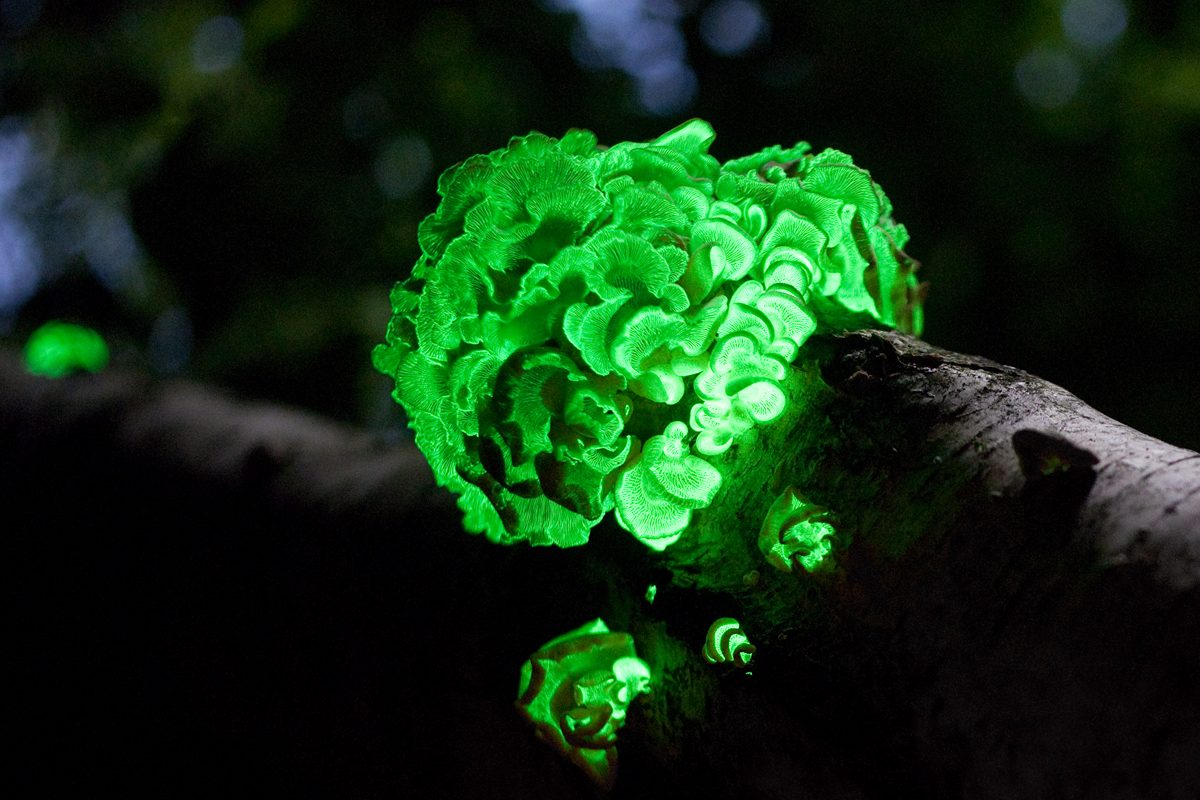
Interestingly, approximately 80-90 species of fungi are currently known to be luminescent. This number keeps growing as researchers venture into unexplored regions. These bioluminescent mushrooms that glow night and day amidst the leaf litter of tropical jungles across the globe. Recent taxonomic studies have shown that many works have been attempted on the taxonomy and evolution of bioluminescent mushrooms, reporting more than 40 bioluminescent mushroom species in the last decade.
Most importantly, we also present current estimates of bioluminescent fungi species identified from five distinct evolutionary lineages worldwide – Armillaria, Eoscyphella, Lucentipes, Mycenoid, and Omphalotus – mainly in tropical and subtropical areas. The majority of these glowing species thrive in tropical environments where the warm, humid conditions provide perfect growing conditions. Brazil, Southeast Asia and Australia are particularly good places with a variety of luminescent mushroom species. Pick a new moon night during the rainy season, go out at night when it is completely dark, and roam in the forest looking for points of yellowish green light.
The Cold Light Phenomenon
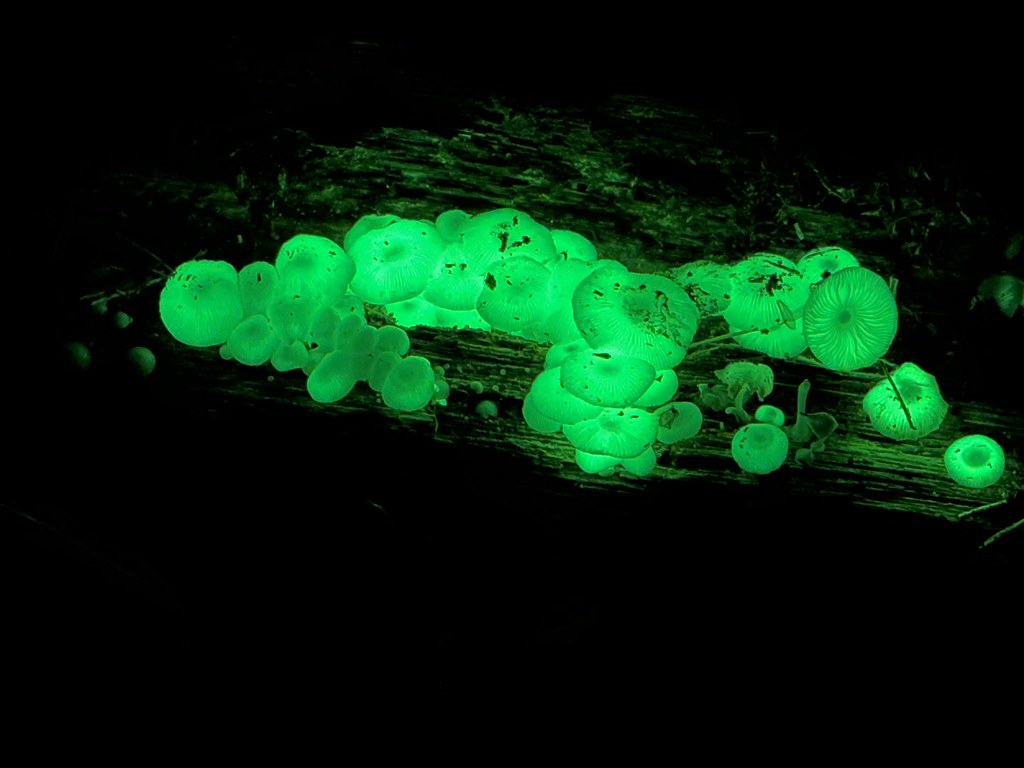
What makes fungal bioluminescence truly remarkable is its incredible efficiency. When you do see it, the light pattern will appear as a series of patches or streaks and is the most common source of foxfire, a term that came from the French faux feu, or false fire. The term comes from the fact that nearly all the energy used in bioluminescence is given off as light and 4–5 percent as heat. By contrast, 90 percent of the energy used by an incandescent light bulb is released as heat and only 10 percent results in the production of light.
In summary, bioluminescence, recognized as “cold light,” where less than 20% of emitted light produces heat, is primarily orchestrated by marine organisms. This efficiency puts our modern technology to shame. Honestly, if we could harness this natural process, we might revolutionize the way we think about lighting. This is why bioluminescence is also referred to as “cold light.”
The Chemical Magic Behind the Glow
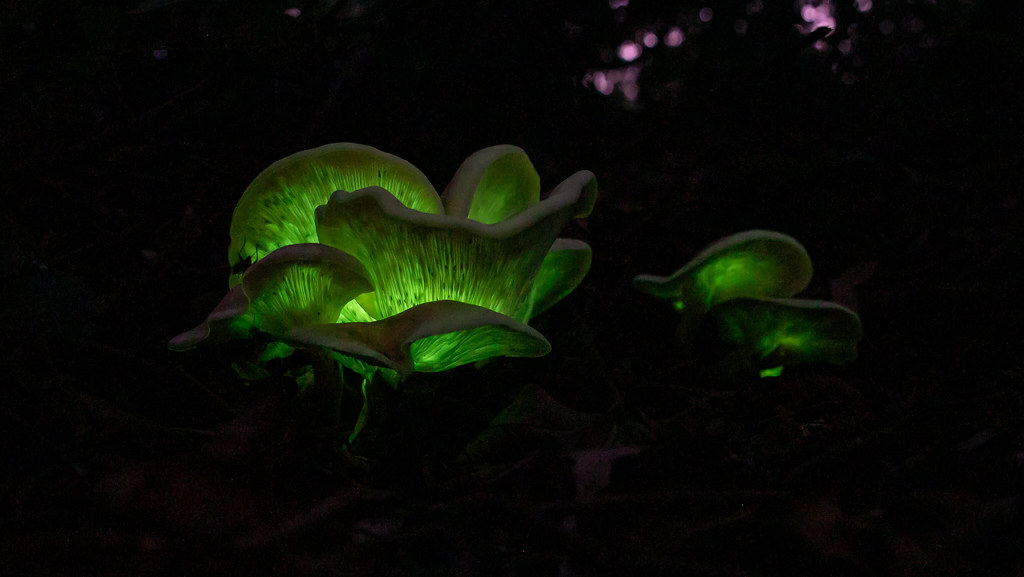
The glow itself is a result of a chemical reaction occurring within the fungal cell, involving the interaction between a light-producing compound called luciferin and an enzyme known as luciferase. Yet the fungal system operates differently from other bioluminescent organisms. The fungal BL is initiated by the cycloaddition of O2 to luciferin to form an α-pyrone endoperoxide high-energy intermediate (II). This oxygenation is not initiated by a single-electron transfer as it is in firefly BL, but it is explained by a charge transfer followed by a spin inversion mechanism.
Here, we report identification of the fungal luciferase and three other key enzymes that together form the biosynthetic cycle of the fungal luciferin from caffeic acid, a simple and widespread metabolite. Introduction of the identified genes into the genome of the yeast Pichia pastoris along with caffeic acid biosynthesis genes resulted in a strain that is autoluminescent in standard media. The pathway involves multiple steps. This cycle of synthesizing luciferin is composed of three stages: biosynthesis of luciferin from caffeic acid, luminescence process from luciferin to oxidized luciferin, and regeneration of caffeic acid from oxidized luciferin.
The Molecular Players in Fungal Light Production
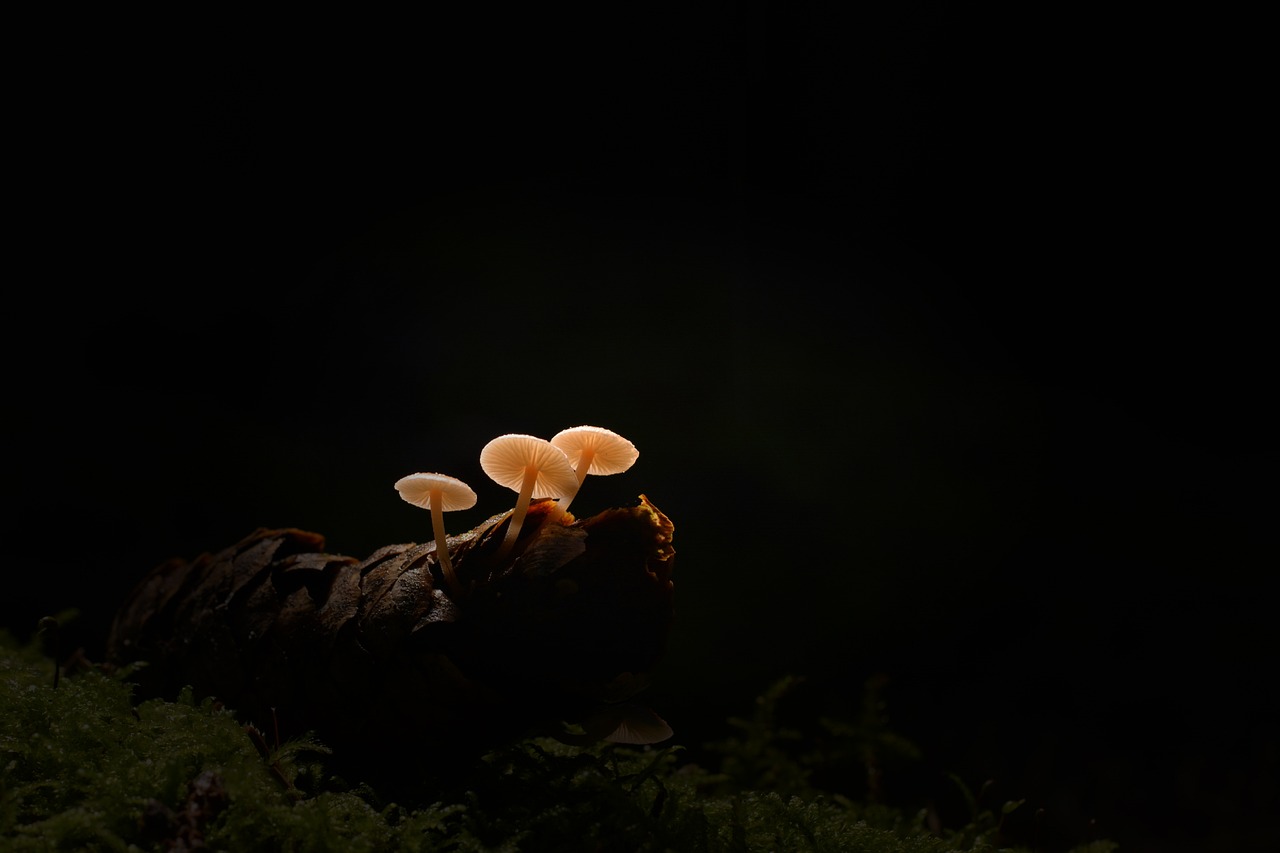
Scientists have identified four enzymes involved in the fungal bioluminescent pathway: luciferase that catalyzes the oxidation of the compound luciferin, which results in the emission of light, and three other enzymes that are involved in the biosynthesis of luciferin. These molecular components work in perfect harmony to create the mysterious glow. They also identified three important steps in the fungal bioluminescence pathway: The synthesis of hispidin from the substrate, caffeic acid. This process uses the first enzyme, hispidin synthase or HispS. The synthesis of the fungal luciferin from hispidin by using the second enzyme, H3H.
The catalysis of the luciferin by fungal luciferase or Luz to produce light. Scientists discovered something fascinating about this process. This illustrates a few things: first that non-glowing fungi also contained the luciferin precursor (a fungal metabolite known as hispidin.) And second, Bioluminescent fungi require not only hispidin, but also the ability to produce two specific enzymes: one to convert hispidin to actual luciferin, and the other to catalyze the oxidative reaction that produces the bluish-green glow of Foxfire.
Why Do Mushrooms Waste Energy Glowing
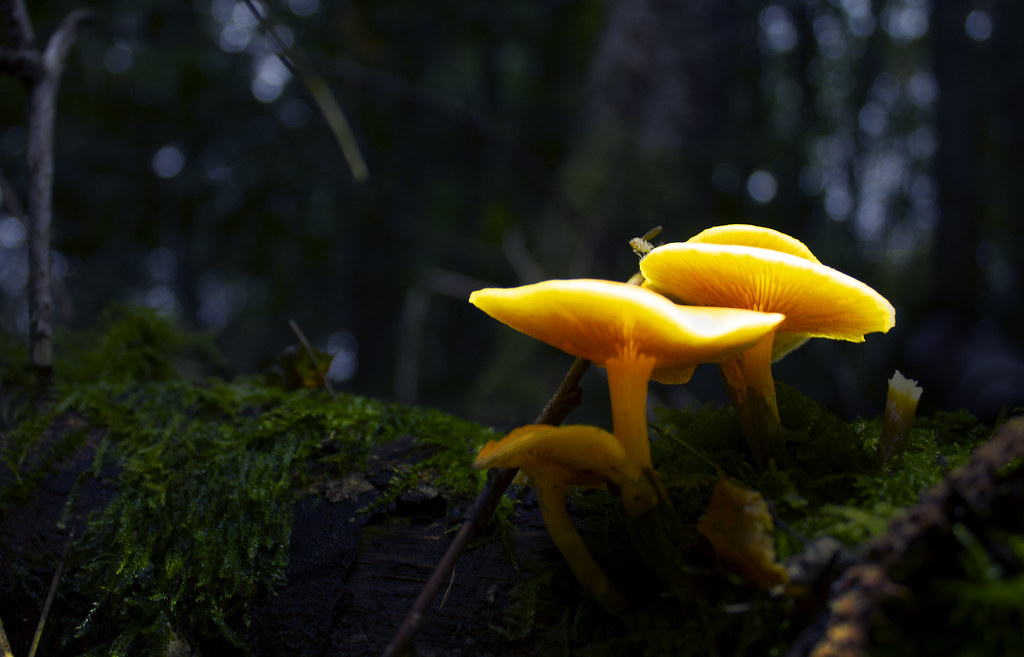
“Why do luminescent mushrooms, all of which emit light 24 hours per day, which must be an energy consumptive process, glow at all?” Desjardin asks. This question has puzzled researchers for decades. The glowing fungi use a lot of energy to produce constant light, but scientists are still unsure about the benefit of the light synthesis for the fungi. Scientists have come up with two possible theories as to why fungi produce light.
The first theory: the fungi use the light to lure insects. Fungi are unable to move, disperse the spores, and colonize new areas in the forest. Therefore, they must rely on the wind or animals, such as insects, to carry their spores elsewhere. The second theory is the light could be an accidental by-product of metabolism. In this case, the light production has no benefits at all for the fungi. However, recent research strongly supports the first theory over the metabolic accident hypothesis.
The Insect Attraction Hypothesis
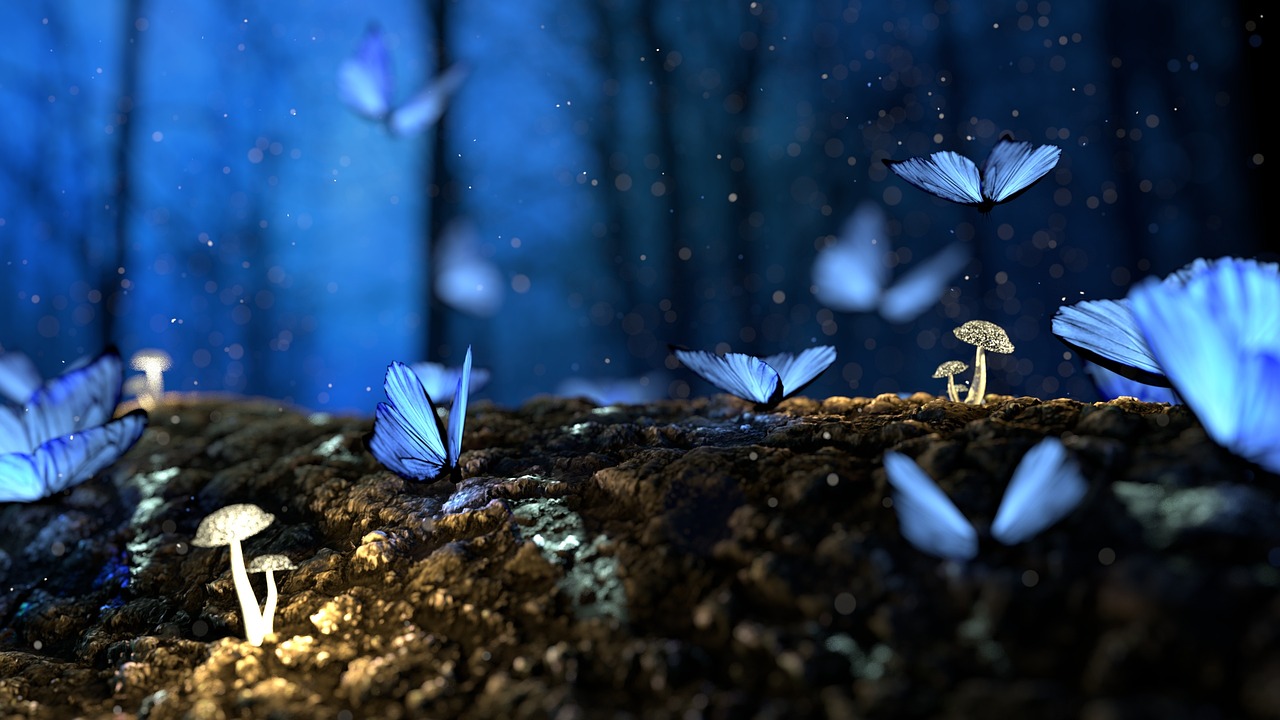
Scientists investigated the first theory by using plastic mushrooms with green LED-emitting light, similar to the fungal bioluminescence in the Brazilian Coconut Forest (Oliviera et al., 2015). They observed the light by the plastic mushrooms attracted a variety of insects, which could potentially disseminate spores. This experimental approach provided compelling evidence for the spore dispersal theory. The researchers set up one final test. They created four fake acrylic mushrooms with the exact shade of green LED light to mimic (or copy) the real mushrooms. To make sure that the light was what made the insects come, they also set up four fake mushrooms that were completely dark.
It was a raging hit – the glowing mushrooms attracted over three times as many flies, bugs, wasps, ants, and beetles than the dark fakes during the five test n The results were remarkable. The team created LED mushrooms with the exact same color of green to mimic the real mushrooms. They also set up fake mushrooms with no glowing light and found that three times as many insects visited the glowing mushies. The team determined that the light emitted from the fungi attracts the attention of beetles, flies, wasps, and ants. The insect visitors are apparently good for the fungi because they spread fungal spores around.
The Circadian Clock Connection
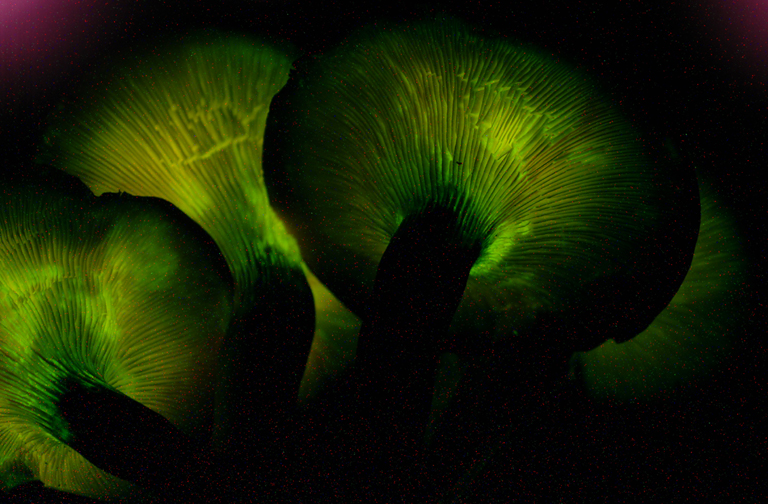
A 2015 study showed that bioluminescence in Neonothopanus gardneri, a large, bright mushroom that grows at the base of young palm trees in Brazilian coconut forests, is under the control of a circadian clock. The activity of the enzymes involved in producing light peaks at night and this regulation implies that the lights serve a purpose. This discovery revealed that the glowing isn’t random but precisely controlled. The researchers studied Neonothopanus gardneri, a Brazilian species, and found that the species regulates its bioluminescence through circadian rhythms – the mushroom’s levels of luciferin, reductase, and luciferase (the chemical compound and enzymes that combine to produce light) peak at night, attracting insects that might not otherwise be able to locate the mushrooms in the dark.
Foxfire glows only at night, with a continuous green light, which implies that the process is regulated. The same study suggests that the release of luciferin in mushrooms is guided by circadian rhythms. The timing makes perfect biological sense. The scientists proposed that this ‘foxfire’ was constant because it was a signal for something that was constantly needed. Similar to how a lighthouse doesn’t turn on its beam for just certain ships, the light was meant to alert everyone, especially at night.
Evolution of Fungal Bioluminescence

Bioluminescent fungi are descended from the last common ancestor of the Mycenoid and the Marasmioid clades of Agaricales, which have been maintained for at least 160 million years of evolution. The evolutionary story gets even more interesting. Our data suggest a single, early origin of luminescence in the fungi with multiple losses of the ability to emit light. This suggests that glowing was once more common among fungi than it is today.
These luminescent mushrooms also hail from more than a dozen genetic lineages, leaving Desjardin to wonder if this glow in fact evolved once and most other mushrooms just lost the ability. We analyzed evolution of the enzymes of the luciferin biosynthesis cycle and found that fungal bioluminescence emerged through a series of events that included two independent gene duplications. The retention of the duplicated enzymes of the luciferin pathway in nonluminescent fungi shows that the gene duplication was followed by functional sequence divergence of enzymes of at Rather than bioluminescence evolving multiple times, it appears it evolved once and was then lost in most fungal lineages over millions of years.
Where to Find Glowing Mushrooms
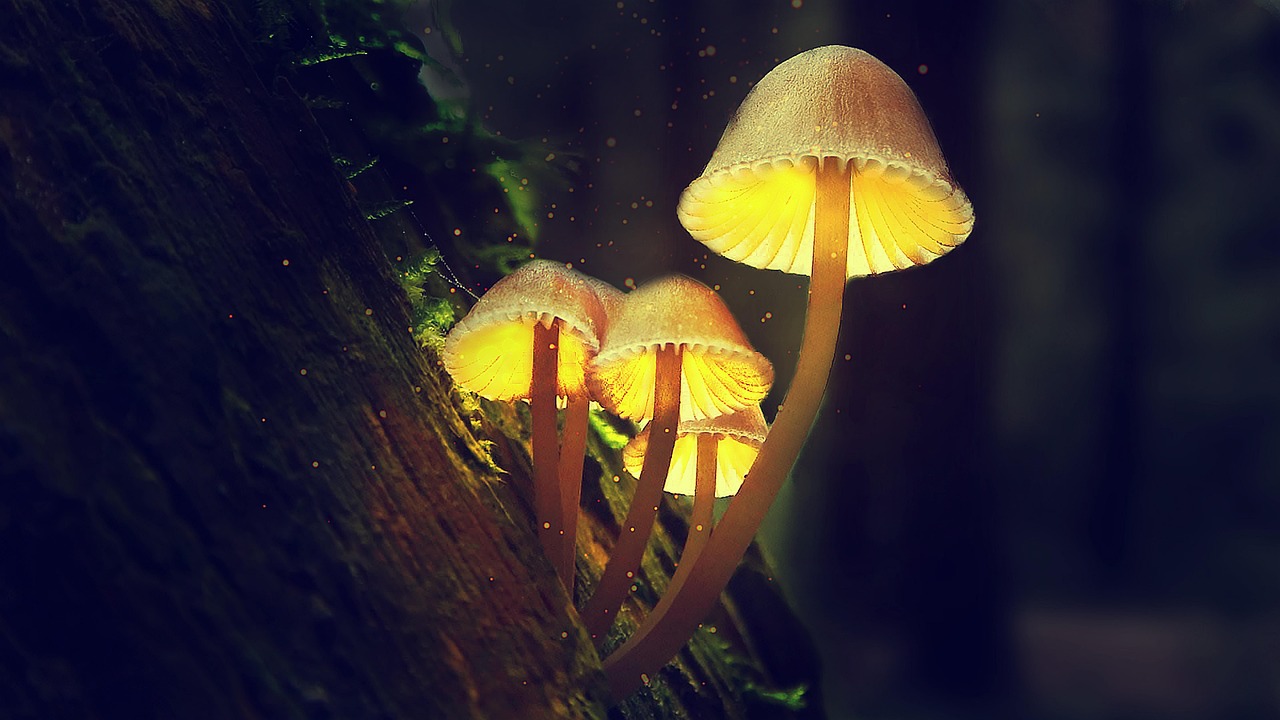
Honey mushroom grows on decaying wood and is a well-known forest tree parasite that can be found from late summer through late fall in forests throughout North America, Europe, and Asia. It emanates a very low light from its mycelium. To see it well, you’ll need to let your eyes adjust to the dark for a good 15–20 minutes. Three species of light-producing fungi are commonly found throughout North America: honey mushroom (Armillaria mellea), jack-o-lantern (Omphalotus olearius), and bitter oyster (Panellus stipticus).
A couple of articles I read seemed to agree that your best bet for seeing foxfire is to head to old, moist oak woods where you can find lots of big dead sticks, logs, and stumps. Again, a night with a new moon or thick cloud cover would probably be best. To observe this fungal phenomenon, head into the woods on a new moon, avoiding light pollution, and turn off your flashlight. Once the sky fades to black, you might see the cold light of Foxfire glowing faintly around you. The experience requires patience and the right conditions, yet those who witness it describe it as truly magical.
Applications in Modern Science
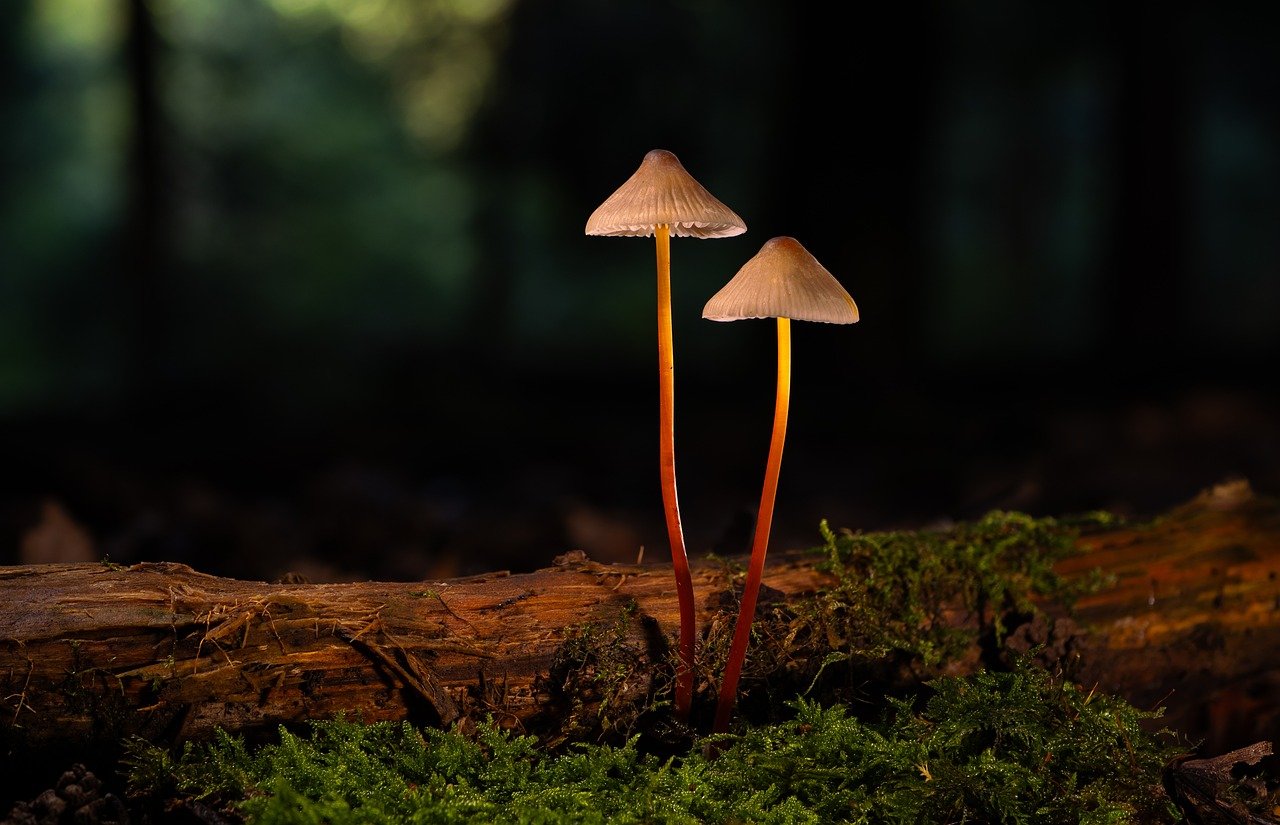
Discovering about the fungal bioluminescence pathway is exciting because it leads us to many promising applications by transferring this pathway to a new system and different species. Producing bioluminescence in plants was nearly impossible due to various hurdles: the difficult strategy to create uniform glow in plant tissues, the expensive cost to maintain the glow, the inconvenient method to produce continuous light, and the inefficient way to deliver the substrate. However, scientists have overcome these challenges. To overcome these hurdles, two groups of researchers successfully incorporated the fungal bioluminescence pathway to engineer glowing plants. In both studies, the substrate, caffeic acid, came directly from the plants.
Now, Khakhar et al. have inserted the genes that encode the enzymes of the fungal bioluminescence pathway into tobacco plants. The experiments found that this was sufficient to turn caffeic acid into molecules of luciferin which are able to produce light. Inserting the same genes into several other plant species, including tomatoes and dahlias, produced similar results. Like the green fluorescent protein found in jellyfish, the fluorescent genes in fungi can target genes in other organisms and tag their locations. This could be useful in pharmaceutical development, medical research, and gene therapy. Bioluminescent fungi can also be a biosensor.
Future Research and Mysteries
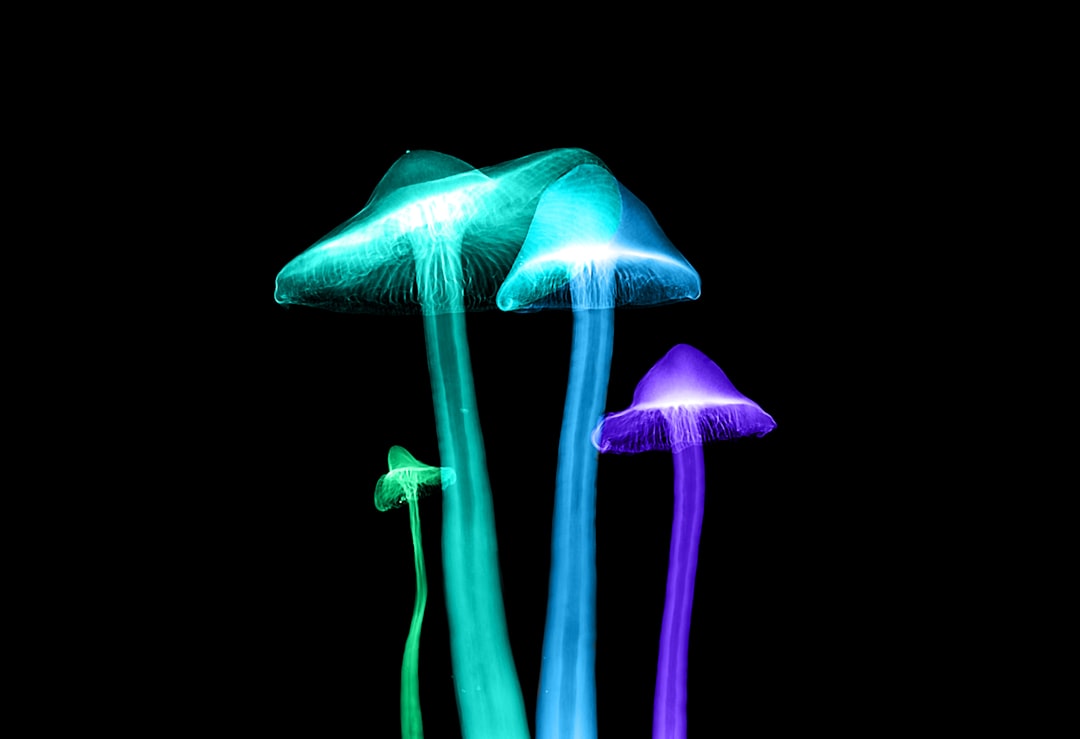
There is a wealth of undiscovered species, particularly in unexplored ecosystems such as forest floors, tropical regions, and polar areas, where diverse bioluminescent mushroom species may exist and represent a biodiversity hotspot for these organisms. These discoveries have the potential to significantly enhance our understanding of bioluminescence mechanisms, evolutionary adaptations, and contributions to ecosystem stability. The field remains wide open for discovery. In the meantime, the mycologists continue their hunt – and even have a few new species up their sleeves that will soon be described, as well. “We will continue to find a number more, which is always fun,” Desjardin says. “And when they end up being completely different lineages, it’s always exciting and brings up new questions.”
“Finding bioluminescent fungi in forests is quite challenging,” he added, “as we have to search for them at night!” But Professor Linde is not quite convinced by that reasoning, as a similar experiment in Australia didn’t show any insect attraction to bioluminescent fungi. “We still really don’t know what this does,” she says. Many questions remain unanswered, keeping researchers busy and ensuring that the mystery of glowing forests will continue to captivate scientists for years to come.
The science behind glowing forests reveals nature’s incredible ingenuity in creating light through chemical reactions that put human technology to shame. These bioluminescent fungi represent millions of years of evolution, possibly serving as ancient beacons that call to insects in the darkness of dense forests. While we’ve made significant progress in understanding their chemistry and potential evolutionary purpose, many mysteries remain. From their remarkable efficiency as “cold light” producers to their potential applications in biotechnology, these glowing organisms continue to illuminate both our forests and our scientific understanding.
What fascinates you more about these glowing mushrooms – their mysterious evolutionary purpose or their potential to revolutionize biotechnology? Tell us in the comments.

